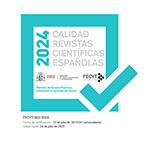The Linguistic Path of “Romance”: A Systemic- Functional Analysis and Gender Comparison of Songs of the 1950s and the 2000s
Abstract
This paper brings to the realm of linguistics a set of forty love songs in English and Spanish by male and female singers from two different decades: the 1950s and the 2000s. The main objective is to show that ideology is linguistically encoded in songs. Through the qualitative and quantitative analysis of mental and material processes expressed by verbs in the lyrics, the differences in the construction of ‘romance’ and relationships between the two decades will be presented. The findings show that, in the 2000s, love songs are much more material than six decades ago (commonly mental). The study also reveals that in the 50s men were active and seducers whereas women were passive and ‘objectified’. However, in the 21st century two trends for each gender can be distinguished: women as the active ones or just as wild and independent. Men are portrayed either as sensitive or louts.Downloads
Article download
License
In order to support the global exchange of knowledge, the journal Investigaciones Feministas is allowing unrestricted access to its content as from its publication in this electronic edition, and as such it is an open-access journal. The originals published in this journal are the property of the Complutense University of Madrid and any reproduction thereof in full or in part must cite the source. All content is distributed under a Creative Commons Attribution 4.0 use and distribution licence (CC BY 4.0). This circumstance must be expressly stated in these terms where necessary. You can view the summary and the complete legal text of the licence.











